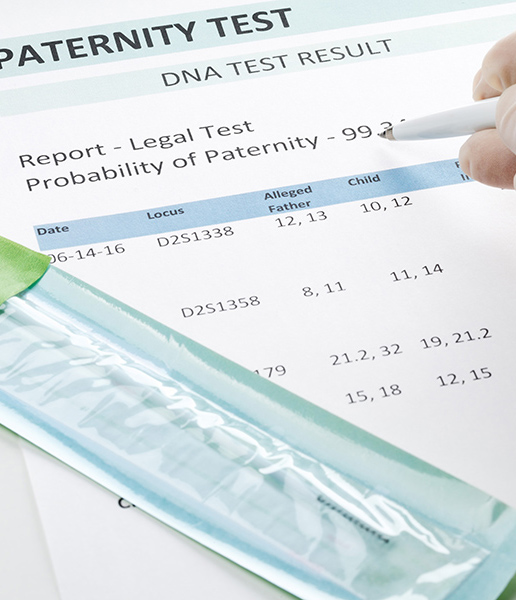Establishing Paternity
Establishing paternity in California is crucial for fathers seeking to secure their parental rights and build a legal parent-child relationship. In California, establishing paternity ensures that a child has access to financial support, inheritance, health benefits, and a bond with both parents. Whether you’re a mother or a father looking to establish paternity, this guide will outline the legal framework, explain important steps, and offer key resources to help you navigate the process.
Contact Fontes Law Group for your family law matters.
What is Paternity?
Paternity is the legal acknowledgment of a man as a child’s father. Establishing paternity is essential for unmarried parents, as California law does not automatically presume paternity for a child born out of wedlock. Once established, paternity provides a basis for parental rights and obligations, including child custody, visitation, and support.
Why is Establishing Paternity Important?
For children, establishing paternity provides multiple benefits:
- Financial Support: Both parents are legally responsible for supporting their child.
- Access to Medical History: Knowing both parents’ medical histories can be critical for health.
- Benefits: Social Security, insurance, inheritance rights, and military benefits may be accessible.
- Emotional Bond: Legal paternity often strengthens the child’s connection with both parents.
For fathers, paternity is essential to assert rights in custody and visitation arrangements, providing a foundation for a meaningful relationship with the child.

Meet Family Law Lawyer
Catherine J. Navarro
Partner
How is Paternity Established in California?

California law provides several pathways for establishing paternity:
- Presumption of Paternity for Married Fathers
- If a man is married to the mother when the child is born, California law presumes he is the father under California Family Code § 7540.
- If the child is born within 300 days after the marriage ends (by divorce, separation, or death), the presumption remains unless proven otherwise.
- Voluntary Declaration of Paternity (VDOP)
- The Voluntary Declaration of Paternity is a simple way for unmarried parents to establish paternity without court involvement.
- Both parents sign the declaration, typically at the hospital after birth or at a child support or welfare office. This form is filed with the California Department of Child Support Services (DCSS), and once processed, it is legally binding, giving both parents equal rights and responsibilities.
- Court Order
- If paternity is disputed or uncertain, either parent can file a petition with the family court to establish paternity.
- The court may order DNA testing to determine biological parenthood. A genetic match of 99% or higher typically establishes paternity legally.
- Acknowledgment through Child Support Services
- A father may also establish paternity by working with the California Department of Child Support Services (DCSS), which can assist in identifying the father and setting up child support.
Steps to Establish Paternity in California
- Voluntary Declaration: Parents can complete a Voluntary Declaration of Paternity, which is often the simplest method. Forms are available at hospitals, birthing centers, and the DCSS offices.
- Petitioning the Court: If either parent is unsure of the child’s paternity or there is disagreement, a paternity case can be filed in family court.
- Genetic Testing: The court may require DNA testing, which is highly accurate and definitive.
- Legal Documentation: Once paternity is established, the father gains the right to seek custody or visitation and is responsible for child support.
For information on filing paternity claims, visit the California Courts Self-Help Center.
Time-Sensitive Considerations for Establishing Paternity
The process of establishing paternity can be initiated at any time, but sooner is usually better. Key timelines include:
- Filing During Pregnancy: A paternity case can be initiated during pregnancy.
- Statute of Limitations: While California generally allows flexibility in filing, a delay could impact the child’s legal rights and the father’s opportunity to assert parental rights.
Challenging Paternity in California

There may be circumstances where a man who is presumed or legally recognized as the father finds evidence to suggest he is not the biological parent. California law allows certain challenges to paternity:
- Presumed Fathers: If a man is presumed to be the father under marriage-based presumptions but has reason to believe he is not the biological father, he may contest paternity in court within a certain timeframe, especially if genetic testing shows non-paternity.
- Voluntary Declaration of Paternity Challenge: A father who signed the VDOP may rescind it within 60 days or may petition the court to challenge paternity under specific conditions, such as fraud or mistake of fact.
Challenging paternity involves strict legal guidelines. For more details, consult a family law attorney or visit the California Department of Child Support Services website.
California’s Paternity Opportunity Program (POP)
California’s Paternity Opportunity Program (POP) enables unmarried parents to establish paternity easily and voluntarily. By signing a Declaration of Paternity form, parents can avoid lengthy court procedures. This declaration is free and typically offered at hospitals and birthing centers.
For more information on the POP program, visit the California Department of Public Health.
Rights and Responsibilities After Establishing Paternity
Once paternity is legally established:
- Parental Rights: The father gains the right to request custody or visitation and participate in decisions affecting the child.
- Child Support Obligations: Both parents share financial responsibility. Child support arrangements ensure that both parents contribute to the child’s upbringing.
- Name on the Birth Certificate: With paternity established, the father’s name can be added to the birth certificate if not already listed.
Resources for Establishing Paternity in California
Below are some valuable resources for establishing and understanding paternity in California:
- California Department of Child Support Services (DCSS) https://childsupport.ca.gov
- California Courts Self-Help Center: https://www.courts.ca.gov/selfhelp-parentage.htm
- California Department of Public Health’s Paternity Opportunity Program (POP): https://parentage.dcss.ca.gov/
These resources provide comprehensive guidance on paternity establishment procedures, legal requirements, and forms needed.
Why You Should Act Quickly
Time is a critical factor in paternity cases. Establishing paternity early in a child’s life can simplify the process, preserve rights, and lay a foundation for custody and support arrangements. Delays may complicate paternity claims and can lead to a lack of support for the child. If you have any questions about your rights or obligations, consult a family law attorney.
Fontes Law Group: Supporting Families in Paternity Matters
At Fontes Law Group, we understand the importance of establishing paternity and the impact it can have on your family. Our experienced attorneys in Santa Ana and Riverside are dedicated to helping you through each step of the process, whether you need to establish paternity, assert parental rights, or resolve child support issues.
Bottom Line
Establishing paternity in California can be a straightforward process when approached with the right information and support. Whether you’re a mother seeking support or a father pursuing rights, securing paternity is essential for the welfare of your child and family stability. By taking timely action, accessing state resources, and seeking legal guidance as needed, you can ensure that your child benefits from the love, support, and legal rights of both parents.
If you need assistance or have questions about paternity or any family law matter, reach out to Fontes Law Group today. We’re here to help you protect your rights and support your family.
